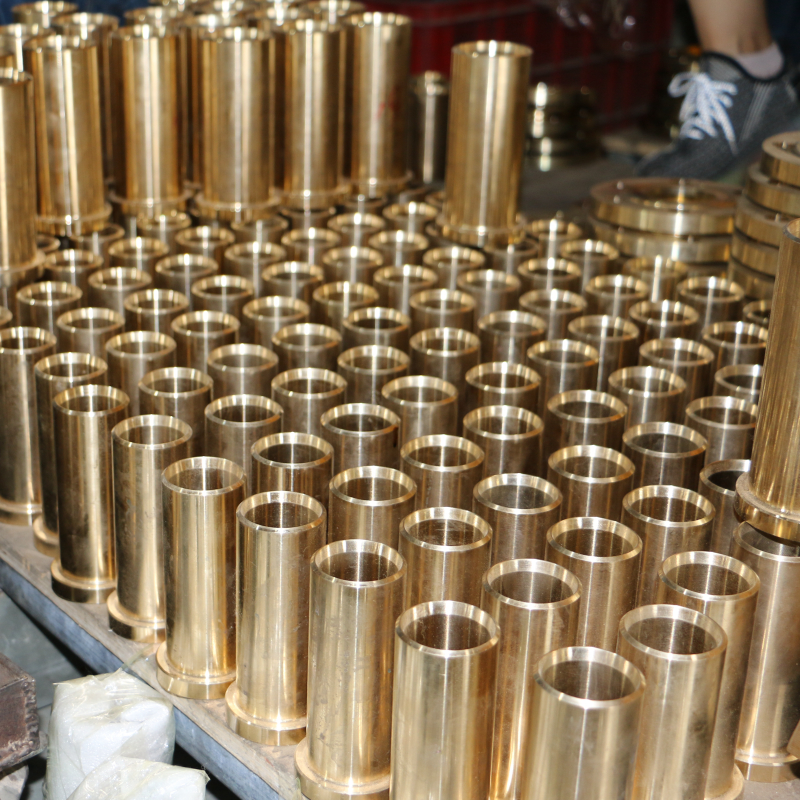 Mazhuang Village, Yuhe Town, Huixian City, Xinxiang City, Henan Province, China
Mazhuang Village, Yuhe Town, Huixian City, Xinxiang City, Henan Province, China
 Service Hotline +86 17630258963
Service Hotline +86 17630258963  Cell phone +86 17630258963
Cell phone +86 17630258963 Casting and forging are two different methods of metal fabrication that differ:
Processing technology: copper melted into a liquid state, and then poured into a specific casting, to be cooled and solidified to obtain the desired shape of the copper parts.
Common casting methods are sand casting, metal casting, precision casting and so on. Among them, sand casting is the most traditional, the most widely used method, it can produce complex shapes, larger size copper parts; metal casting of high productivity, casting quality, suitable for mass production; precision casting can produce high dimensional accuracy, surface quality of complex copper parts.
Casting process, the copper liquid in the casting gradually cooling, its organization and performance will be affected by the cooling rate, casting materials and other factors.
Product properties: Due to the solidification shrinkage of the copper liquid during the cooling process, casting defects such as shrinkage holes, shrinkage loosening, porosity and other casting defects may occur, thus affecting the mechanical properties of copper parts. However, casting can produce complex shapes, especially with complex internal cavity of the copper parts, for some large, complex shape of the copper parts, casting is a more economical processing method. Casting copper parts of the organization is relatively loose, strength and toughness is generally inferior to forged copper parts.
Appearance quality: the surface is relatively rough, there may be sand holes, pores, slag and other defects. Subsequent cleaning and surface treatment, such as sandblasting, grinding, polishing, etc., is required to improve its surface quality. The dimensional accuracy of cast copper parts is relatively low, especially for some large cast copper parts, its dimensional error may be larger.
Application areas: widely used in machinery manufacturing, automobile manufacturing, shipbuilding, building decoration and other fields. For example, engine block, pump shell, valve, sculpture and other copper parts are usually produced by casting process.
For some copper parts with complex shapes, large sizes and small batches, casting is a more suitable processing method.

Processing technology: it is through the copper billet pressure, so that it produces plastic deformation, so as to obtain the required shape and performance of copper parts.
The main forging methods are free forging and die forging. Free forging is on the free forging equipment, the use of simple tools on the copper billet forging; die forging is on the die forging equipment, the use of molds on the copper billet forging.
During the forging process, the copper billet under pressure undergoes plastic deformation, and its internal organization is refined and densified, thus improving the strength, toughness and fatigue life of the copper parts.
Product performance: After plastic deformation, the internal organization of forged copper parts is more dense, grain refinement, so as to have higher strength, toughness and fatigue life. Forging can improve the copper fiber organization, so that its distribution along the shape of copper parts, improve the mechanical properties of copper parts. However, forging can only produce copper parts with relatively simple shapes, and the cost of forging is higher for copper parts with complex shapes.
Appearance quality: the surface is relatively smooth, generally no obvious defects. Due to the plastic deformation of copper billet in the forging process, the dimensional accuracy of forged copper parts is high, which can meet some high-precision requirements of the application. The appearance quality of forged copper parts is relatively good, and can be used without excessive surface treatment.
Application areas: mainly used in aerospace, automobile manufacturing, machinery manufacturing and other fields, the mechanical properties of copper parts and high dimensional accuracy requirements. For example, aircraft engine blades, automobile crankshafts, gears and other copper parts are usually produced by forging process.
For some simple shape, large batch, high mechanical properties of copper parts, forging is a more ideal processing method.
